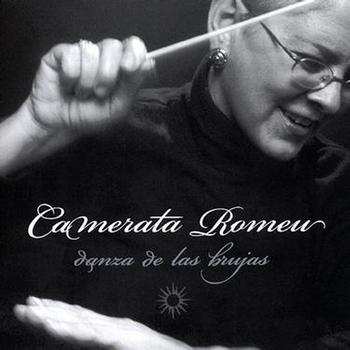12.8.3 Camerata Romeu

The Camerata Romeu was founded in 1993, although its official debut took place in September 1994. This orchestra, under the direction of Maestro Zenaida Castro Romeu, is composed exclusively of women, making it the first of its kind in Cuban musical history. Its image is a fitting tribute to the beauty of Cuban women.
Since 1995, the Camerata has been based in the Minor Basilica of San Francisco de Asís (Offices between Amargura and Churruca, Old Havana, Havana) and has an ever-growing audience that is deeply familiar with the music they perform.
He has also participated in numerous festivals both nationally and internationally.
In 1996, they performed at the Costa Rica International Arts Festival and the Stockholm Water Festival in Sweden; in 1998, they appeared at the International Festival of the National Ballet of Cuba, celebrating its 50th anniversary, and at the Havana International Contemporary Music Festival. The following year, they visited Belgium and Spain to participate in the SFINKS ’99 International Festival and the 19th Torroella de Montgrí International Music Festival, respectively.
From 2001 to 2007, Camerata Romeu exhibited its music in various venues such as: the Recitaj International Festival (13th edition) Marin Village in Martinique; the International Festival of Contemporary Music of Havana; the Early Music Festival of Havana; the Voss Festival in Norway; the 13th edition of the Flamenco Biennial in Seville with flamenco guitarist Victor Monge, Serranito; the Flamenco Ahora Festival; the Bernal Jiménez International Music Festival in Mexico; the 5th Esteban Salas International Festival in Havana; the 5th Ceiba Cultural Festival, Villahermosa, Mexico and at Les Concerts d’Aix Theatre Du Jeu de Paume in France.
The group has performed in countries such as the United States, Mexico, Canada, Colombia, Sweden, Costa Rica, Norway, France, and many of the world’s most prestigious venues.
Works by composers as slender as Leo Brouwer, Esteban Salas, Ernesto Lecuona, Astor Piazzolla, and Antonio María Romeu are transported to the concert hall in their original or intricately orchestrated versions. From the instruments of the Camerata Romeu, sounds emanate that transport us to the era of classics such as Bach, Mozart, Beethoven, and Vivaldi. Their performances display an elegant style that reveals distinction and good taste, achieving incomparable sensuality, lyricism, and delicacy.
Their album, “La Bella Cubana,” won the 1997 EGREM Award in the Concert Music category and the Critics’ Choice Award. “Cuba mía,” released in 2000, and “Danza de las Brujas,” released in 2004, reflect a promotion of Cuban and Latin American music. Without forgetting the classical repertoire in their discography, the Camerata combines a wide variety of styles and trends. Other albums include: “Non Divisi”; “Raigal”; “Tampa Hababa Oslo”; “El día que muere el silencio”; “Strictly Worldwide”; “Cervantes”; and “Sueños de Ida y Vuelta.”
Currently, the group boasts members with highly qualified academic and professional backgrounds, and a format that includes violins, violas, cellos, double basses, and percussion.
One of the great attractions of the Camerata Romeu, besides its insatiable research and the achievement of perfection in instrumental performance, is the interpretative power and grace of its director, heir to a vast cultural tradition. Another of its distinctive elements on stage is the absence of scores, demonstrating that they have mastered the music and providing irrefutable evidence of professional rigor.








